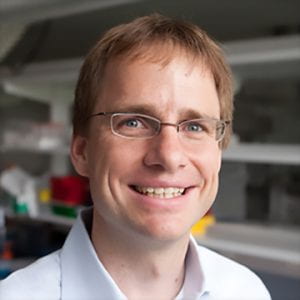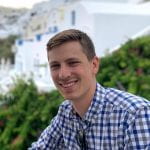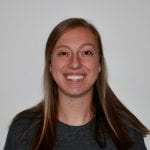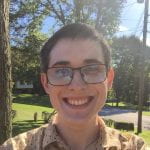Principal Investigator

Jan Lammerding, Ph.D.
Weill Institute for Cell and Molecular Biology
Department of Biomedical Engineering
Cornell University
235 Weill Hall; Ithaca, NY 14853
607-255-1700(Office)
607-255-1980 (Lab)
607-255-5961 (Fax)
jan.lammerding@cornell.edu
Research Support Specialist

Noam Zuela-Sopilniak
nz63@cornell.edu
I obtained a B.Sc. in basic medical science and a Ph.D. in human genetics studying a diverse group of diseases called laminopathies. Here at Cornell, I am interested in studying the diverse roles of the nuclear envelope protein lamin A/C in both cardiac disease and cancer. Specifically, I aim to uncover the molecular mechanisms leading to lamin A/C related cardiomyopathy, as well as to determine the role lamin A/C play in cancer severity and metastatic potential in vivo and how alterations in cancer cell metabolism affect lamin A/C levels.
Postdoctoral Associates

Julie Heffler
jh2347@cornell.edu
I’m originally from Houston, TX and completed my BS in Biochemistry at the University of Houston. After undergrad, I worked in Ben Prosser’s lab at the University of Pennsylvania where I studied the connections of the non-sarcomeric cytoskeleton with the nucleus in cardiomyocytes via the LINC complex. In the Lammerding lab, I’ve continued my love for the heart and the cytoskeleton while also branching into skeletal muscle. My research goals are to elucidate the complex linkages between the nucleo- and cytoskeleton, their interplay with each other, and their importance to striated muscle health, function, and disease. In my down time, I like to play video games with my friends and enjoy good food.

Julien Morival
jm2427@cornell.edu
Originally from France, I also grew up in the United States and Switzerland. I eventually went on to receive both a B.S. at The Johns Hopkins University and a Ph.D. at the University of California, Irvine in Biomedical Engineering. I am interested in leveraging my experience in epigenetics and sequencing to understand the molecular mechanism that ties nuclear mechanics to changes in the transcriptome and chromatin architecture. Specifically, I aim to focus on understanding this relationship in the contexts of unique laminopathy-inducing mutations, mechanical stimulus, as well as confined migration of cancer cells.
Graduate Students

Maggie Elpers
BME – mae228@cornell.edu
I am a Ph.D. student in the Biomedical Engineering (BME) program. I grew up in Kingsport, Tennessee, and completed my B.S. in Bioengineering from Clemson University. My overarching goal in the Lammerding lab is to understand the metabolic consequences of cancer cells and immune cells during confined migration. Specifically, I would like to determine the mechanisms by which cells undergo metabolic reprogramming and produce the energy needed to accomplish confined migration. Long term, I would like to obtain a research position in industry that employs engineering and cell biology in order to develop better cancer therapies.
Ameen Haj-Yahia
GGD – ah2367@cornell.edu
I am a Ph.D. student in the Genetics, Genomics, and Development (GGD) program. I am interested in deciphering the gene regulatory processes in health, disease, and development. In my most recent research, I leveraged experimental and bioinformatic tools to investigate how aberrant chromosomal topology and epigenetics contribute to melanoma progression through altered enhancer-promoter interactions and subsequent changes in gene expression. In my free time, I enjoy expanding my experimentation beyond the lab by experimenting with various coffee brewing and roasting methods at home, exploring nature, and spending time with friends.

Anna Hazelwood
BME – alh333@cornell.edu
I am a Ph.D. student in the Biomedical Engineering (BME) program. I grew up in Holden, Massachusetts and I completed my B.S. in Biomedical Engineering at the University of Rochester. My overarching goal in the Lammerding lab is to understand the mechanism of dilated cardiomyopathy disease progression caused by lamin mutations. Specifically, I am working to develop a 3D in vitro model of cardiac muscle tissue to investigate how nuclear mechanics influence disease progression. In the future, I would like to obtain a research position in industry that involves engineering tissue models for furthering understanding of disease mechanisms.

Sarah Henretta
BME – sjh333@cornell.edu
I am a Ph.D. student in the Biomedical Engineering (BME) program. I grew up in Fairport, New York and completed my B.S. in Mechanical Engineering from Rochester Institute of Technology (RIT). My overarching goal in the Lammerding Lab is to understand how confined migration affects cell characteristics and metastatic potential. After receiving my Ph.D., I hope to obtain a research position, either in academia or industry, investigating cancer cell behavior to improve patient outcomes.
Kristen Nedza
BMCB – kn392@cornell.edu
I am a Ph.D. student in the Biochemistry, Molecular, and Cell Biology (BMCB) program. I am originally from Cleveland Ohio, and I earned my B.S. in Molecular Genetics from Ohio State University. My research focuses on understanding the role of the nucleus in nuclear mechanotransduction, specifically using fluorescent-based tools to measure nuclear membrane tension. I aim to investigate how dynamics of membrane tension influence mechanotransduction in biological contexts, such as confined cell migration and cell stretching.

Jacob Odell
BMCB – jdo59@cornell.edu
I am a Ph.D. student in the Biochemistry, Molecular and Cell Biology (BMCB) program. I am from Staatsburg New York and I completed my B.S. in Cell and Molecular Biology at SUNY Binghamton. I am interested in the evolution of nuclear envelope structures such as lamins and how they may have contributed to the evolution of multicellular animal life. My project is investigating a lamin from the social amoeba Dictyostelium discoideum, an organism that exists in both single-cell and multicellular forms. I hope to determine what role this primitive lamin might have on protecting these organisms from mechanical stress, as this would have implications on the role of lamins on the evolution of multicellular life.
Technicians

Ern Hwei Hannah Fong
Technician – ef264@cornell.edu
I am originally from Singapore, and have also lived in Hawaii, England, Nigeria, India, and Taiwan, before completing my Hon.B.Sc. in immunology at the University of Toronto, Canada. I also hold an M.Phil. in immunology from Mount Sinai School of Medicine in New York City, and an M.S. in immunology from Cornell University. I am working in the laboratories of Dr. Ben Cosgrove and Dr. Jan Lammerding to manage the rodent colonies of both labs, and provide support for various research projects in the lab.

Alex Sopilniak Mints
Technician – asm342@cornell.edu
I work as a research technician in the laboratories of both Dr. Jan Lammerding (BME) and Dr. Eric Richards (BTI). In the Lammerding lab, I help manage and genotype the rodent colony, as well as provide support for other projects. In the Richards lab, we collaborate with Dr. Lammerding to assess the mechanical properties of plant and insect nuclei as a function of nucleus size, DNA content and chromatin packaging.








